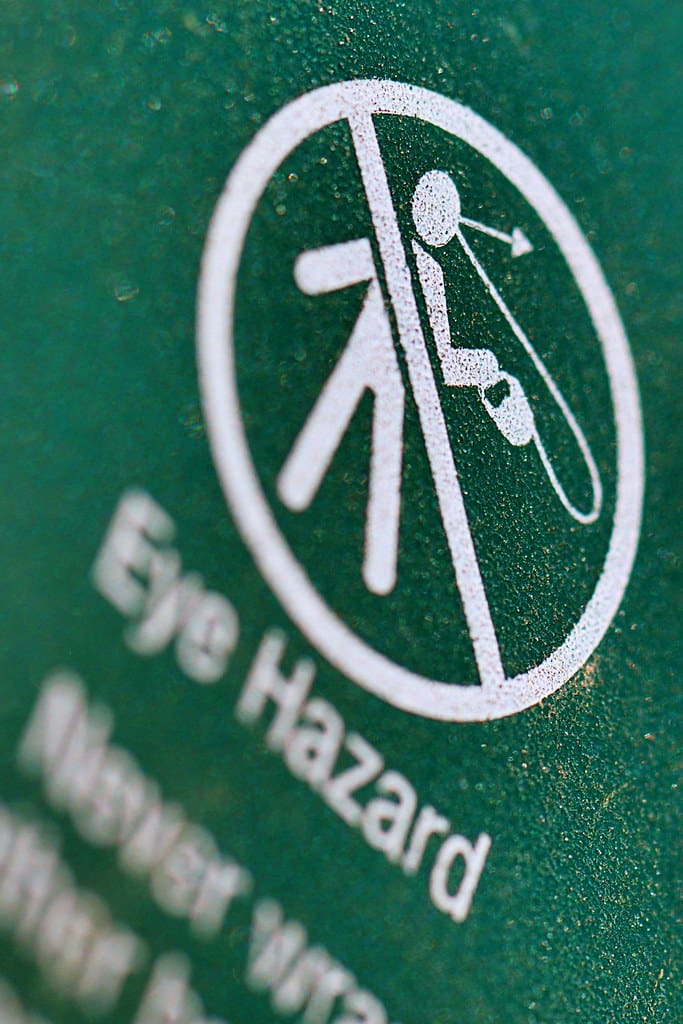The oil and gas industry is no stranger to hazards. In 2022, American company Production Waste Solutions LLC faced serious safety and health violations after failing to protect a worker from hydrogen sulfide exposure, which ultimately led to a fatal injury. The company neglected to provide an eye flush station and omitted a hazard assessment to determine the need for personal protective equipment.
This tragic event emphasizes the need for a proactive approach to eye protection. In the vast and intricate landscape of the oil and gas sector lurk numerous threats to workers’ eyes beyond just hydrogen sulfide exposure. Let’s take a closer look below.
Eye hazards in the oil and gas industry
The multifaceted environment of oil and gas operations exposes workers to various eye hazards. The pervasive presence of dust and debris is stirred by drilling activities, which can easily result in an eye infection, scarring, or corneal scratches and abrasions. Meanwhile, resulting exposure to hazardous chemicals can range from contact burns to fumes. BBC highlights naphthalene as one of the many substances produced from gas flaring while drilling from oil, which can damage the eyes and potentially lead to cancer.
Additionally, the inherent nature of outdoor tasks exposes workers to windy conditions, which can cause dry eyes, as well as harmful UV rays, which can lead to photokeratitis in excessive amounts. It doesn’t help if you are also working with welding torches, as the resulting UV light can lead to conditions like ‘welder’s flash’ or ‘arc eye.’ Akin to a sunburn on the eye’s surface, these flash burns can induce pain, alterations in vision, and, in severe instances, even loss of vision.
With this variety of eye hazards, it’s not surprising that over 2,000 people experience eye injuries daily in workplaces, with 10 to 20 percent resulting in permanent vision loss. Foreign bodies intruding into the eyes account for 35 percent of injuries, while open wounds, contusions, and burns contribute to the remaining 25 percent. Such statistics underscore the imperative of prioritizing eye protection to prevent life-altering consequences.
Choosing the right eyewear
Standard personal protective equipment (PPE) often includes some form of eyewear. However, recognizing the Value of Safety Glasses can be easier said than done. In our previous article, we wrote how most companies supply safety glasses to their workers, but many tend to be reluctant to wear them due to common issues such as fogging and discomfort.
To address these concerns, considering alternatives becomes essential. Established sunglass brands tend to offer anti-fog performance and world-renowned comfort, with Oakley sports sunglasses additionally designed for industrial safety compliance. These bear the ANSI Z87+ stamp like the Oakley Safety Glasses do, thus providing protection against harmful UV rays as well as impact resistance. The wrap-around designs of Oakley Sutro or Radarlock can also block foreign debris and windy weather.
Of course, these alternatives do not replace the necessity of air-tight goggles or face shields, especially in tasks involving chemical fumes. The IETTSM-DLD model highlights the significance of proactive measures in preventing accidents caused by unsafe behavior, emphasizing that eye protection is a shared responsibility. Workers must adhere to safety protocols, wash their eyes and hands frequently, and consistently wear appropriate eye equipment when engaging in potentially hazardous tasks.
By promoting the use of suitable eyewear, the industry can mitigate the prevalence of eye injuries and uphold the well-being of its workforce. For more on the oil and gas industry, check out our other articles on OILMAN Magazine.
Oil and gas operations are commonly found in remote locations far from company headquarters. Now, it's possible to monitor pump operations, collate and analyze seismic data, and track employees around the world from almost anywhere. Whether employees are in the office or in the field, the internet and related applications enable a greater multidirectional flow of information – and control – than ever before.











